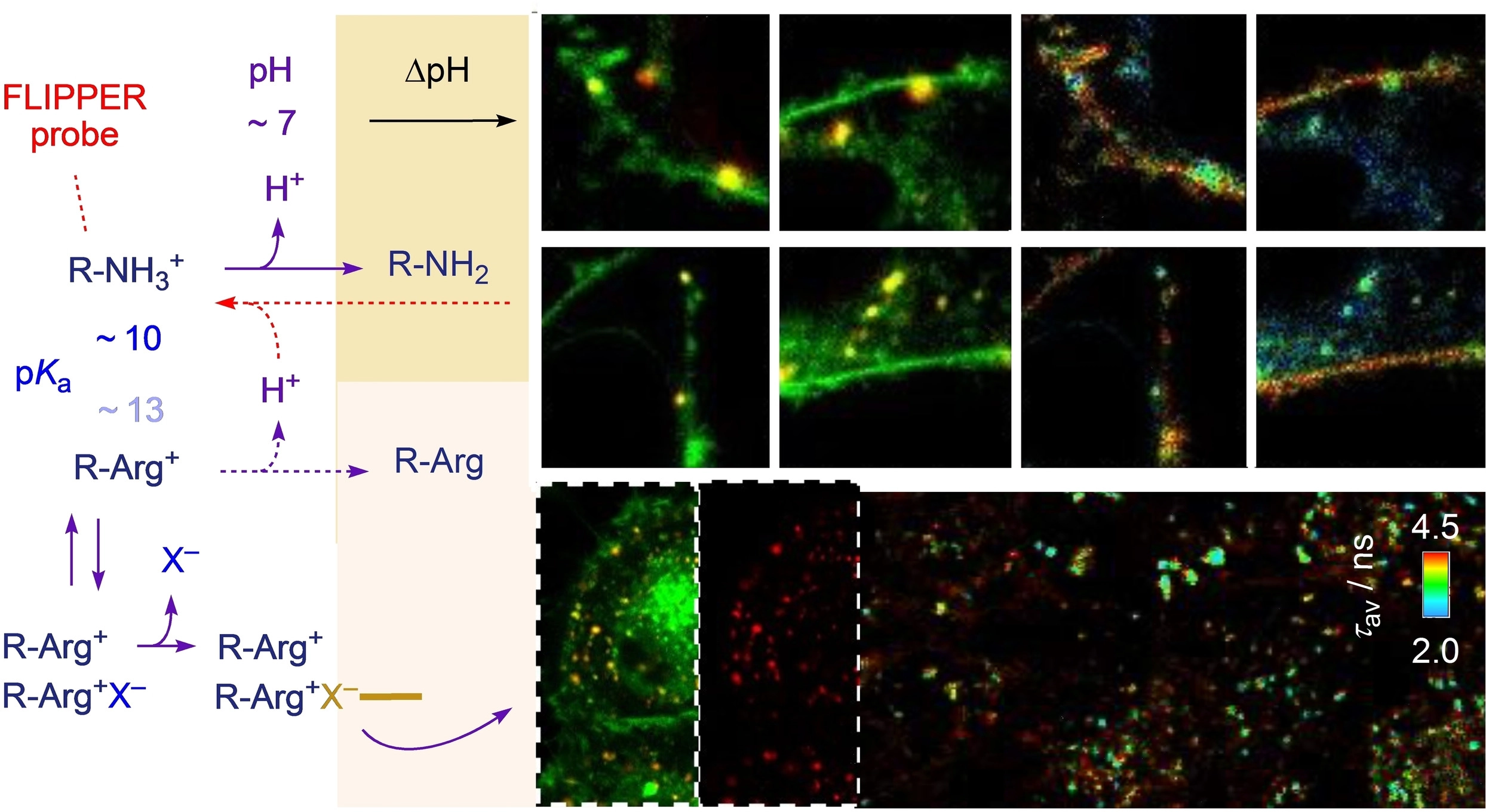- Assies, L.; Mercier, V.; López-Andarias, J.; Roux, A.; Sakai, N.; Matile, S. “The Dynamic Range of Acidity: Tracking Rules for the Unidirectional Penetration of Cellular Compartments” ChemBioChem 2022, 23, e202200192


Labeled ammonium cations with pKa∼7.4 accumulate in acidic organelles because they can be neutralized transiently to cross the membrane at cytosolic pH?7.2 but not at their internal pHKa 9.8. We report here that primary ammonium cations with higher pKa 10.6, label early endosomes more efficiently. This maximized early endosome tracking coincides with increasing labeling of Golgi networks with similarly weak internal acidity. Guanidinium cations with pKa 13.5 cannot cross the plasma membrane in monomeric form and label the plasma membrane with selectivity for vesicles embarking into endocytosis. Self-assembled into micelles, guanidinium cations enter cells like arginine-rich cell-penetrating peptides and, driven by their membrane potential, penetrate mitochondria unidirectionally despite their high inner pH. The resulting tracking rules with an approximated dynamic range of pKa change ∼3.5 are expected to be generally valid, thus enabling the design of chemistry tools for biology research in the broadest sense. From a practical point of view, most relevant are two complementary fluorescent flipper probes that can be used to image the mechanics at the very beginning of endocytosis.
open archive unige:162697 • pdf ![]()
